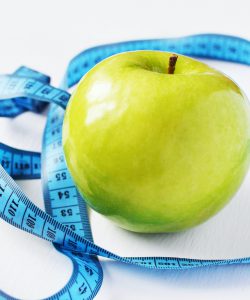In the hustle and bustle of life as a parent, what’s on your plate may not be your priority, but your dietary habits can have an impact on your health. You may consider going on a diet to see changes in your weight or health. For many people, finding the right diet can be a long process. What works for your body type and needs may not work for someone else. A plethora of diets exist but the many options can be overwhelming. But whether you are hoping to lose weight or change your dietary habits, there’s bound to be a diet that fits your lifestyle and health goals best.
Are you hoping to shed a few pounds as a new year’s resolution? Do you want to slowly wean off dairy and red meat? Or focus on decreasing your sugar intake? These are the types of questions to ask yourself before choosing a diet. Both short-term and long-term diets exist with goals of weight loss, health benefits or medical condition management.
When choosing a diet, it’s important to take note of fad diets, research the science behind diet options, and avoid diets that promise rapid weight loss at the expense of your health and wellbeing. Today, we’ll explore two popular diets– keto and paleo– and compare their health benefits to equip you with the tools to make an informed decision about your future diet.
What is the Keto Diet?
In recent years, the ketogenic diet, or keto diet, has become widely popular for its restriction on carbohydrate intake, including sugar. The focus of this diet is to consume more protein and fat to the point of your body reaching ketosis- when your body begins to burn fat for energy instead of blood sugar. With the keto diet, 90% of your daily calories come from fat, while you try to eat less than 50 grams of carbs a day.
Benefits of the Keto Diet
On this diet, foods like bread and whole grains, soda, starchy vegetables, and high-sugar fruit are replaced with high-fat foods like cheese, butter, eggs, nuts and bacon. Sounds too good to be true? It’s important to make sure what you’re eating still stays under the realm of healthy fats and foods. The keto diet has had its share of criticism, but it’s important to note that it is a short-term diet for rapid weight loss, instead of something sustainable in the long-term.
Apart from quicker weight loss, the keto diet also has some benefits to one’s health. It can help manage certain conditions, such as treating epilepsy in children. In one study, nearly a third to two-thirds of patients experienced 50 percent fewer seizures after six months on the diet. The low-carb part of the diet has also helped people with diabetes. Further research of the keto diet explores its use to treat cancer and heart disease.
Cutting down on carbs has other benefits like helping manage acne and increasing ‘good cholesterol’ levels. But the research studies revolving around other health benefits from the keto diet like nervous system disorder management, improved mental clarity, and low blood pressure, remain inconclusive.
What is the Paleo Diet?
The paleo or paleolithic diet, sets you on the path to more whole nutrition, modeled after the diet of our ancestors during the paleolithic era– 2.5 million to 10,000 years ago. How can a diet practically eaten by cavemen survive that long? The paleo diet focuses on foods that could be found by hunters and gatherers, which includes lean meats, fish, eggs, fruits and vegetables, healthy oils (like olive oil), and nuts and seeds.
The paleo diet cuts out virtually all foods introduced by modern farming–refined grains and vegetable oils, potatoes, dairy, and legumes. It also removes salt, trans fatty acids, refined sugar, and processed foods. The diet encourages daily exercise and increased water intake as well.
Benefits of the Paleo Diet
The paleo diet has evolved over millions of years, but in today’s day and age, it’s often used for weight loss and to generally improve one’s health. In fact, in a range of clinical trials and studies, other health benefits have occurred, including better blood pressure and appetite control, improved sleep, and improved mental health.
While long-term studies of the diet remain inconclusive, one argument against the paleo diet is the absence of whole grains and legumes- sources of important nutrients and vitamins for your body. But paleo experts make the claim that the diet has been programmed in our DNA to offer us all of the nutrients we need- a diet as close to the one our ancestors have survived and thrived on for so long.
Key Differences: Keto vs. Paleo
Though both diets offer weight loss, the keto diet is specifically a low-carb diet, cutting out high-carb fruits and vegetables as well as grains, while paleo is naturally just lower in carbs and still allows for natural carbs like sweet potatoes, carrots, and squash. The keto diet does not limit dairy, unlike the paleo diet.
One of the biggest and most important differences between the two diets is that the keto diet is meant to be short-term, while the paleo diet can become a long-term healthy lifestyle. Keto is more focused on quick results and weight loss, allowing you to eat anything that falls under the low-carb, high-fat bucket, which can be dangerous to your health if you’re sticking to bacon and butter. The paleo diet offers a bit more flexibility and highlights fruits and vegetables, lean meats, and nuts/seeds– all important parts of a balanced diet. Its lack of dairy and grain consumption however, raises eyebrows for some nutrition experts.
Another key difference between both diets is accessibility. Virtually anyone has access to foods in the keto diet, but the paleo diet can become expensive with its restrictions to non-processed foods, grass-fed animals, wild game, and nuts. Dairy and grains offer a great and usually inexpensive source of calcium and protein, but since they are not part of the paleo diet, this can limit the diet to only those who can afford it.
Considerations Before You Diet
Regardless of the diet you choose for you and your lifestyle, it’s important to consider a few things before you make the switch.
- Consider your own dietary needs or restrictions, and medical conditions first.
- Check if your budget and schedule allow for any attainable changes in your diet.
- Make sure you are aware of any side effects that can occur with diet changes.
Remember that healthy change happens slowly. Give yourself patience and implement new foods and restrictions to your meals slowly. It’s also a good idea to check in with your doctor before making major diet changes.
Supplement your diet in 2021 with other healthy lifestyle changes. Working directly with a health coach who can tailor a program to fit your needs, lifestyle, and goals may be a great next step. Find a health coach near you.








